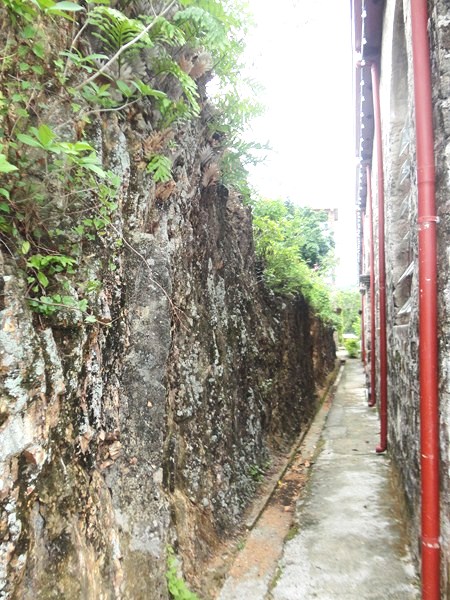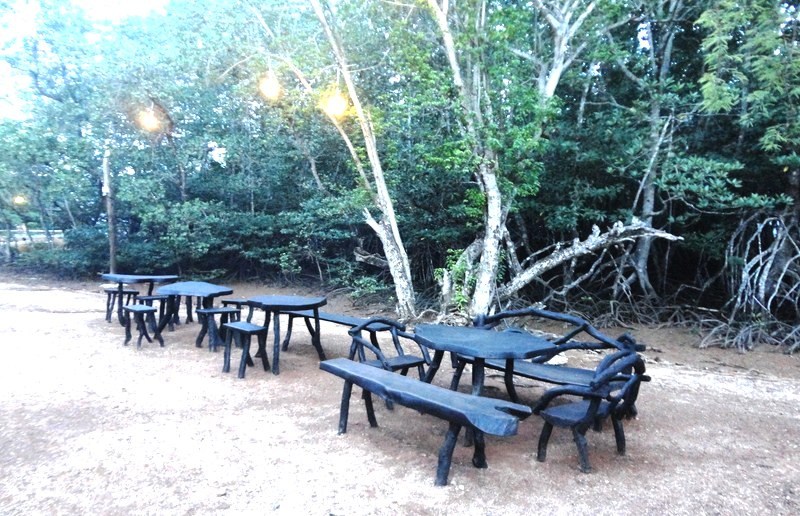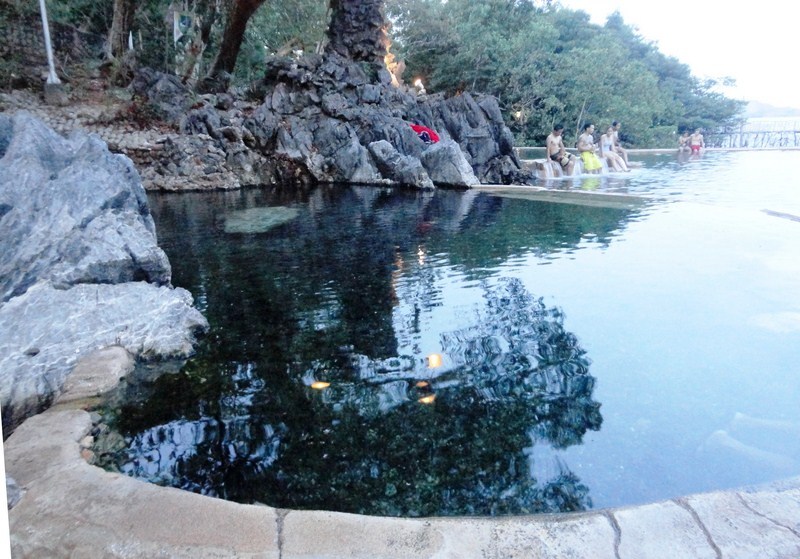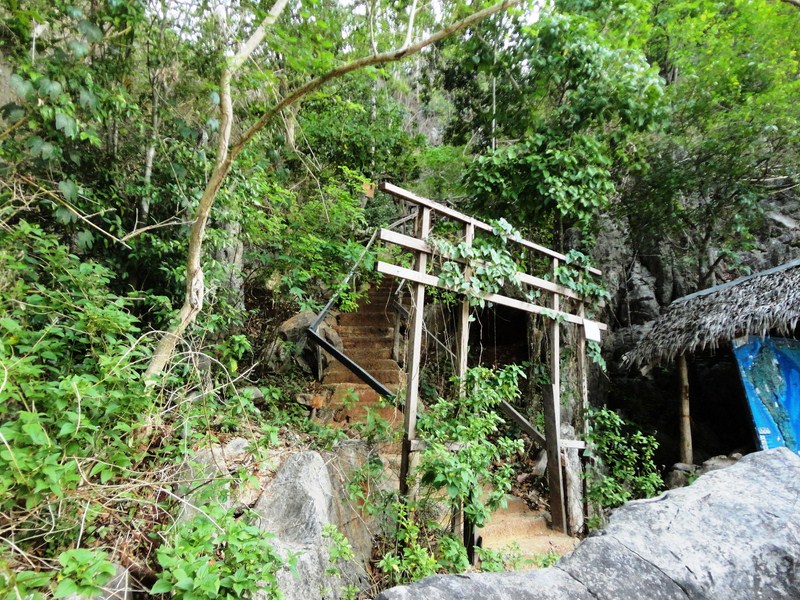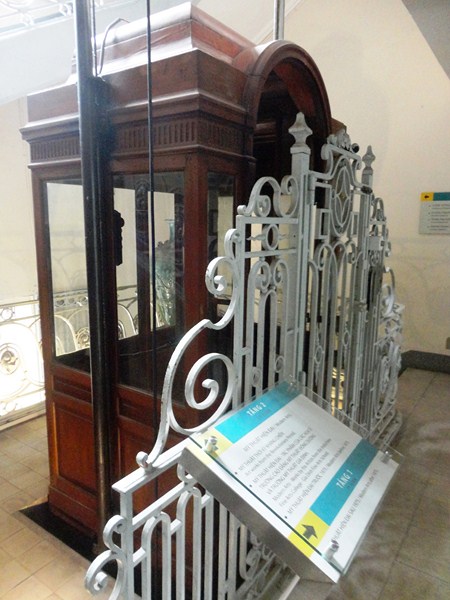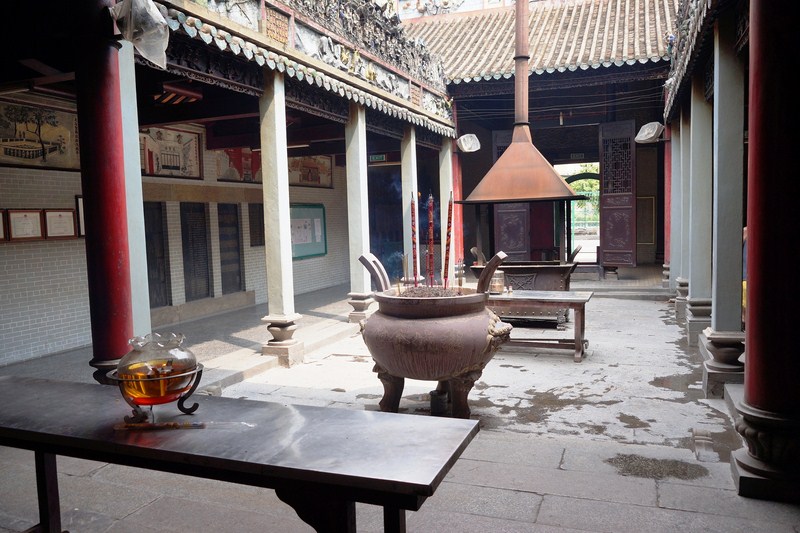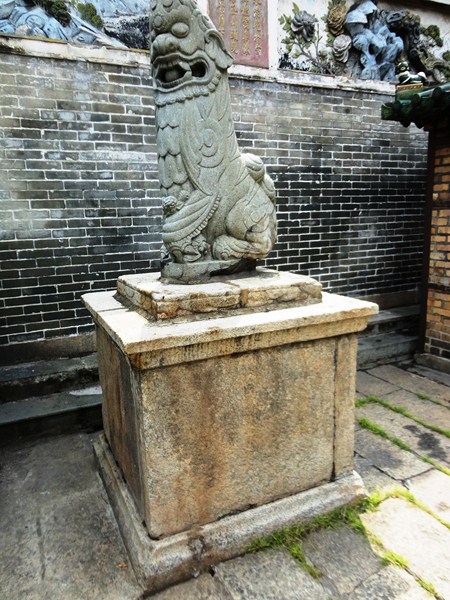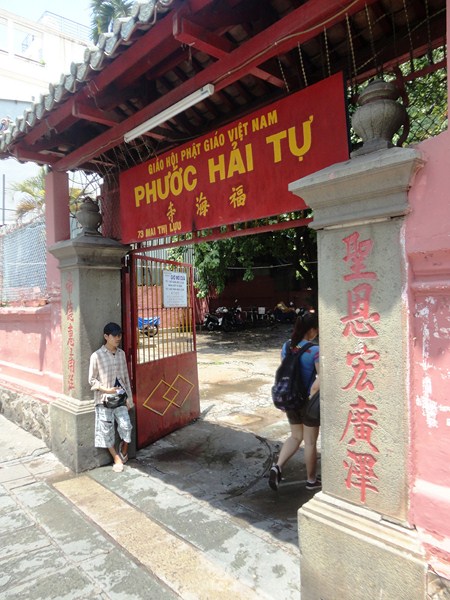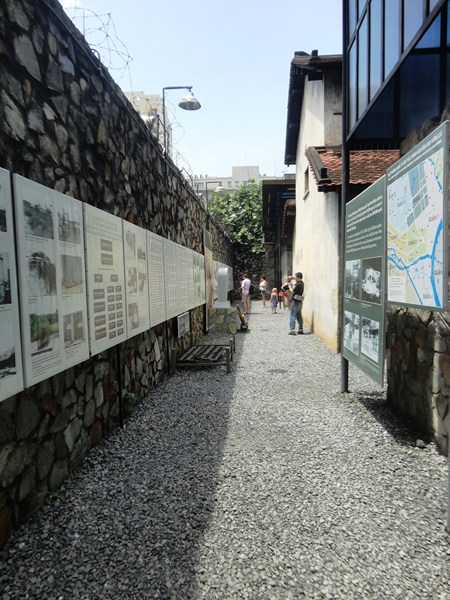From the town proper, we all boarded tricycles to take us, up a high promontory, to the town’s magnificent Church of the Immaculate Conception, originally built in 1746 by the Recollects. It is located within the quadrilateral Fort Culion which was built in 1683 by Fr. Juan de Severo and renovated in 1740.
The fort was partially demolished in the 1930s by American Jesuit Fr. Hugh McNutty to build a larger church, with some of the fort’s original coral rock used for the nave. The church was completed in 1933. Both the fort and church share the same main entrance.
AUTHOR’s NOTES:
The church’s 2-level Baroque facade has semicircular arched main entrance flanked by pilasters and seemingly topped by the royal seal of King Ferdinand and Queen Isabella of Spain. The entrance, in turn, is flanked by niches with statues of angels.
The second level has a centrally located niche with the statue of Our Lady of the Immaculate Conception flanked by semicircular arch windows. Above is a segmental (half-moon) pediment with a centrally located oculus. On the church’s right is a bell tower.
The painted ceiling inside the church is obviously new, but before it was repainted, the original ceiling was painted in 1978 by leper patient Ben Amores, based on the design of Jesuit Fr. Javier Olazabal. To do the paintings, the handicapped Amores, who had no hands, had brushes tied to his arms and was lifted up. In 2003, Jesuit Fr. Gabriel Gonzalez initiated the restoration and renovation of the church.
Today, only a round bastion (turned into a lighthouse), with two carriage-less Spanish-era cannons (one I noticed had 1762A stamped on it, probably indicating the year it was cast), located behind the church sanctuary, and part of the wall are all that remains of Fort Culion. Here, the view of the ocean and Culion town is spectacular.
Culion Tourism Office: mobile number: (0921) 394-7106 (Pastor Hermie Villanueva). E-mail: herme_1670@yahoo.com.ph.
How to Get There: Culion is a 1.5 to 2-hour motorized outrigger boat ride from Coron town.
How to Get to Coron: Skyjet Airlines has 4 times weekly (Mondays, Wednesdays, Fridays and Sundays, 10:30 AM) flights from Manila (NAIA Terminal 4) to Coron (Francisco Reyes Airport). Travel time is 30 mins.
Asia Grand View Hotel: Governor’s Ave., Jolo, Brgy. 5, Coron, Palawan. Tel:(+632) 788-3385. Mobile number: (0999) 881-7848. E-mail: gsd@asiagrandview.com. Manila sales office: Unit 504, Richmonde Plaza, 21 San Miguel Ave., Ortigas Center, Pasig City. Tel: (+632) 695-3078 and 531-8380. Mobile number: (0917) 550-7373 to 75 Fax: (+632) 695-3078. E-mail: info@asiagrandview.com. Website: www.asiagrandview.com.
Skyjet Airlines: Manila Domestic Airport, Parking A, Terminal 4, NAIA Complex, Brgy. 191, Pasay City, Metro Manila. Tel: (02) 863-1333. E-mail: sales@skyjetair.com. Website: www.skyjetair.com.





